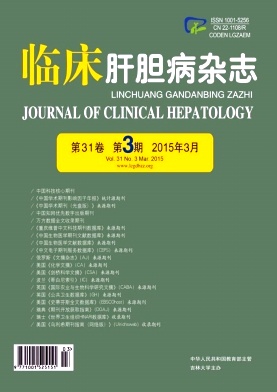Objective To investigate the possible risk factors for rebleeding after splenectomy and pericardial devascularization in the treatment of portal hypertension due to liver cirrhosis,and to provide a certain basis for reducing the incidence of digestive tract re- hemorrhage for these patients. Methods A retrospective analysis was performed on 238 cirrhotic patients with portal hypertension who underwent splenectomy and pericardial devascularization in the First Hospital of Lanzhou University from December 2003 to December 2013. These patients were divided into postoperative rebleeding group( n = 32) and non- bleeding group( n = 206). Univariate analysis( t test or chi- square test) and multivariate logistic regression analysis were performed to investigate the risk factors for rebleeding after splenectomy and pericardial devascularization. Results Of the 32 patients with postoperative rebleeding,17 had esophagogastric variceal bleeding,11 had bleeding due to portal hypertensive gastropathy,and 4 had stress ulcer bleeding. The univariate analysis showed that there were significant differences between the two groups in the following factors: Child- Pugh classification of liver function,degree of liver cirrhosis evaluated intraoperatively,pathological changes of the gastric mucosa,platelet count,prothrombin time( PT),activated partial thromboplastin time( APTT),and presence of diabetes( all P <0. 05). The multivariate logistic regression analysis suggested that the significant independent influential factors for postoperative rebleeding were presence of diabetes,Child- Pugh classification of liver function,degree of liver cirrhosis evaluated intraoperatively,diffuse lesion of the gastric mucosa,PT,and APTT. Conclusion For cirrhotic patients with portal hypertension,the appropriate methods for managing these risk factors are of great clinical significance for preventing rebleeding after splenectomy and pericardial devascularization.







 DownLoad:
DownLoad: